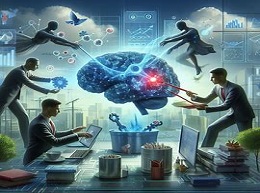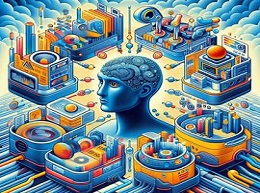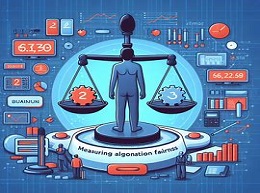Self-Supervised Learning: Training Models without Labeled Data

The Evolution of Self-Supervised Learning
Self-supervised learning has emerged as a groundbreaking approach in machine learning, allowing models to learn meaningful representations from unlabeled data. By leveraging the inherent structure and relationships within the data, self-supervised learning enables efficient and effective model training without the need for manually labeled datasets. In this article, we delve into the principles, techniques, and applications of self-supervised learning, showcasing its transformative potential in various domains.
Understanding Self-Supervised Learning
What is Self-Supervised Learning?
Self-supervised learning is a form of unsupervised learning where models learn from the data itself to generate labels or tasks for training. Instead of relying on external labels provided by humans, self-supervised learning algorithms generate labels or tasks automatically based on the input data's intrinsic properties.
Example: Image Inpainting
In image inpainting, a self-supervised learning task involves predicting missing or occluded parts of an image based on the surrounding context. By training a model to reconstruct the missing portions of the image, the model learns to capture spatial relationships and semantic information within the image without the need for explicit labels.
Techniques and Approaches
1. Contrastive Learning:
Contrastive learning aims to learn representations by contrasting positive samples (similar) with negative samples (dissimilar). Models are trained to bring similar instances closer together in the feature space while pushing dissimilar instances apart.
2. Generative Models:
Generative models, such as autoencoders and generative adversarial networks (GANs), can be trained in a self-supervised manner to generate synthetic data or reconstruct input data from compressed representations.
3. Temporal Learning:
Temporal learning tasks, such as predicting the next word in a sentence or video frame prediction, provide self-supervised training signals based on temporal dependencies and sequential patterns in the data.
Applications of Self-Supervised Learning
1. Natural Language Processing (NLP):
Self-supervised learning has shown remarkable success in NLP tasks such as language modeling, where models are trained to predict the next word in a sentence based on the context. BERT (Bidirectional Encoder Representations from Transformers) is a prominent example of a self-supervised learning model in NLP.
2. Computer Vision:
In computer vision, self-supervised learning techniques like image inpainting, image colorization, and image super-resolution enable models to learn meaningful representations from unlabeled image data. These representations can then be fine-tuned for downstream tasks like object detection and image classification.
3. Speech Recognition:
Self-supervised learning is also applicable in speech recognition tasks, where models are trained to predict phonemes or acoustic features from raw audio data. By learning from unlabeled audio data, self-supervised models can achieve competitive performance in speech recognition tasks.
Advantages and Challenges
Advantages:
- Data Efficiency: Self-supervised learning requires only unlabeled data, eliminating the need for costly and time-consuming data annotation.
- Generalization: Models trained with self-supervised learning often exhibit better generalization to new, unseen data domains.
- Scalability: Self-supervised learning techniques can scale to large datasets and complex tasks, making them suitable for a wide range of applications.
Challenges:
- Task Design: Designing effective self-supervised learning tasks that capture meaningful representations from the data can be challenging.
- Evaluation Metrics: Evaluating the performance of self-supervised learning models and comparing them to supervised counterparts can be non-trivial.
- Computational Resources: Training self-supervised learning models may require significant computational resources and infrastructure.
Future Directions
1. Hybrid Approaches:
Combining self-supervised learning with supervised learning techniques to leverage both labeled and unlabeled data for model training.
2. Domain Adaptation:
Extending self-supervised learning techniques to domain adaptation tasks, where models learn representations that generalize across different data distributions.
3. Continual Learning:
Investigating self-supervised learning methods for continual learning scenarios, where models adapt to new tasks and data over time without catastrophic forgetting.
Unleashing the Potential of Self-Supervised Learning
In conclusion, self-supervised learning represents a paradigm shift in machine learning, enabling models to learn from vast amounts of unlabeled data and extract meaningful representations without human intervention. As self-supervised learning techniques continue to advance, they hold the promise of unlocking new frontiers in AI research and applications, from natural language understanding and computer vision to speech recognition and beyond. By embracing self-supervised learning, researchers and practitioners can harness the latent information within unlabeled data and propel AI towards greater efficiency, scalability, and generalization capabilities.














